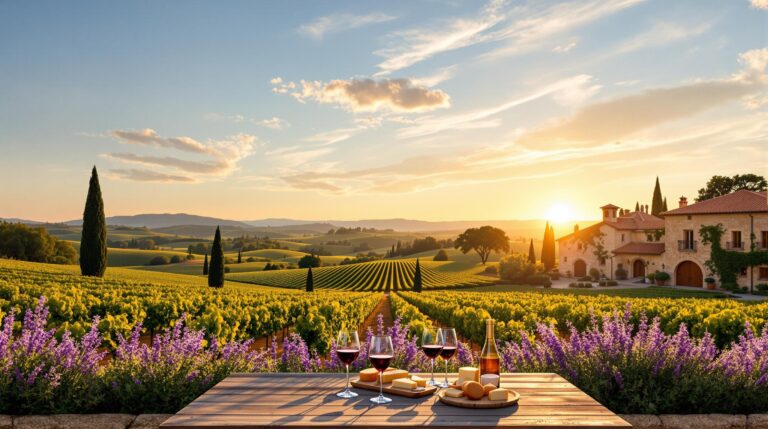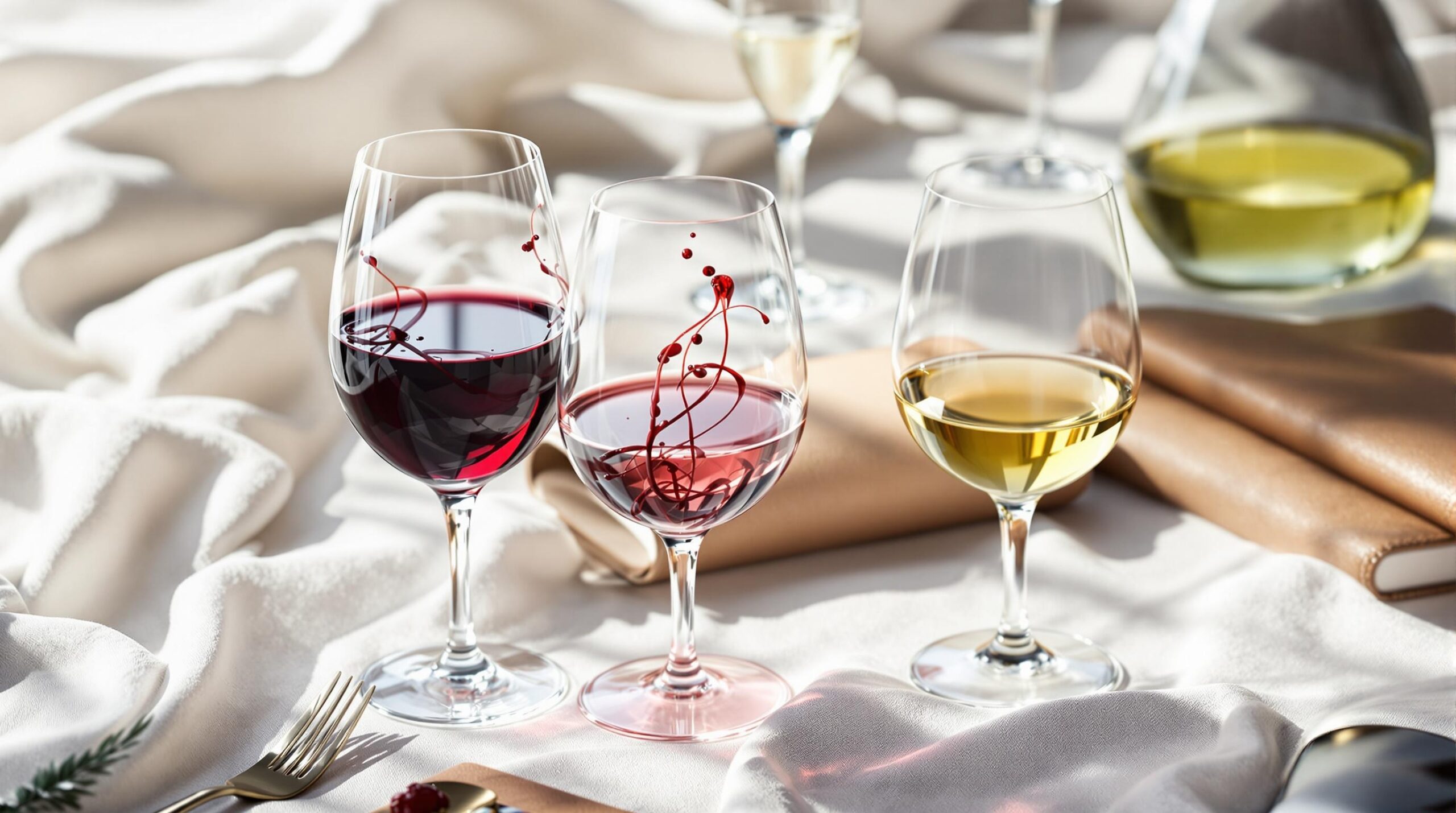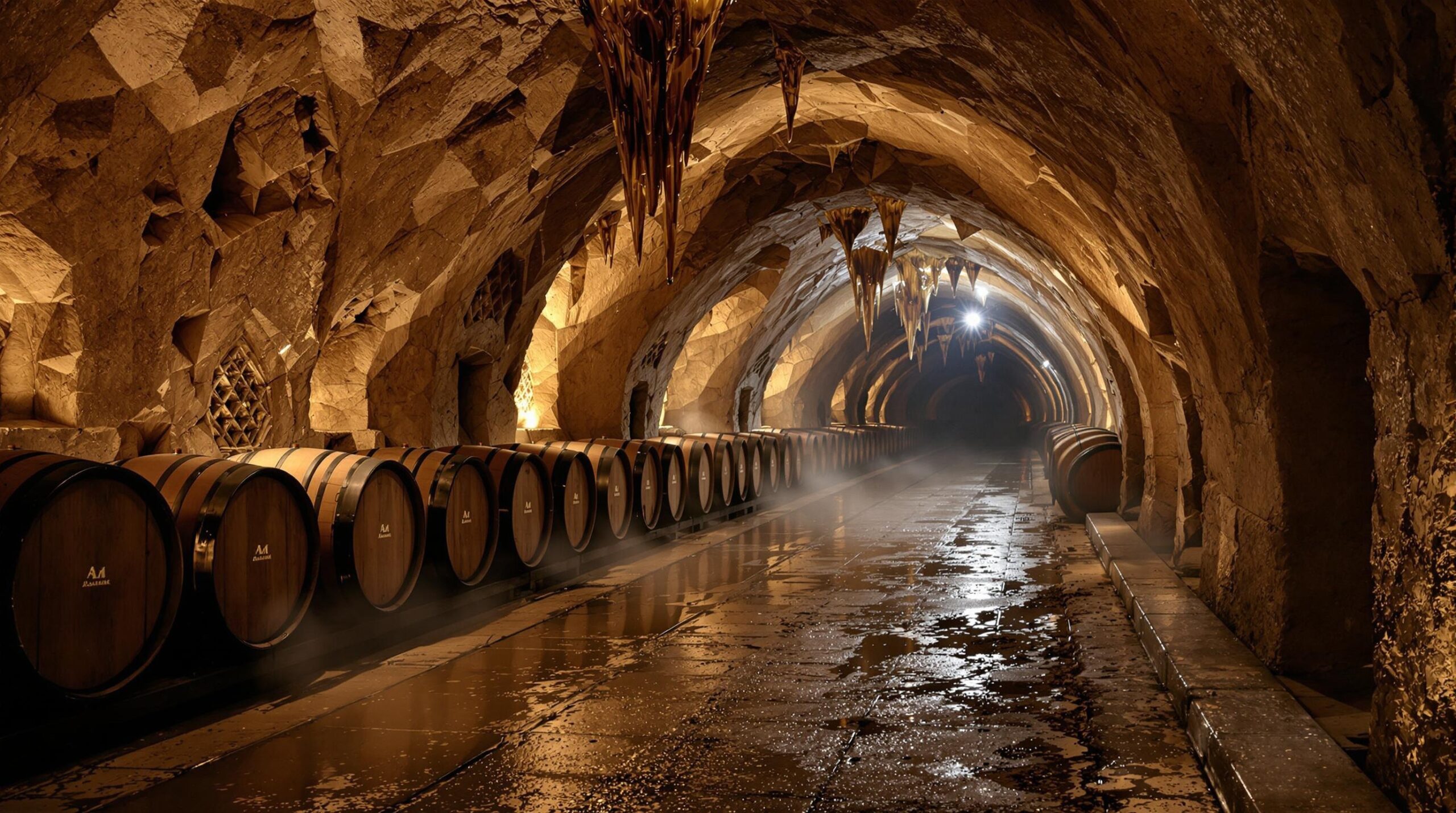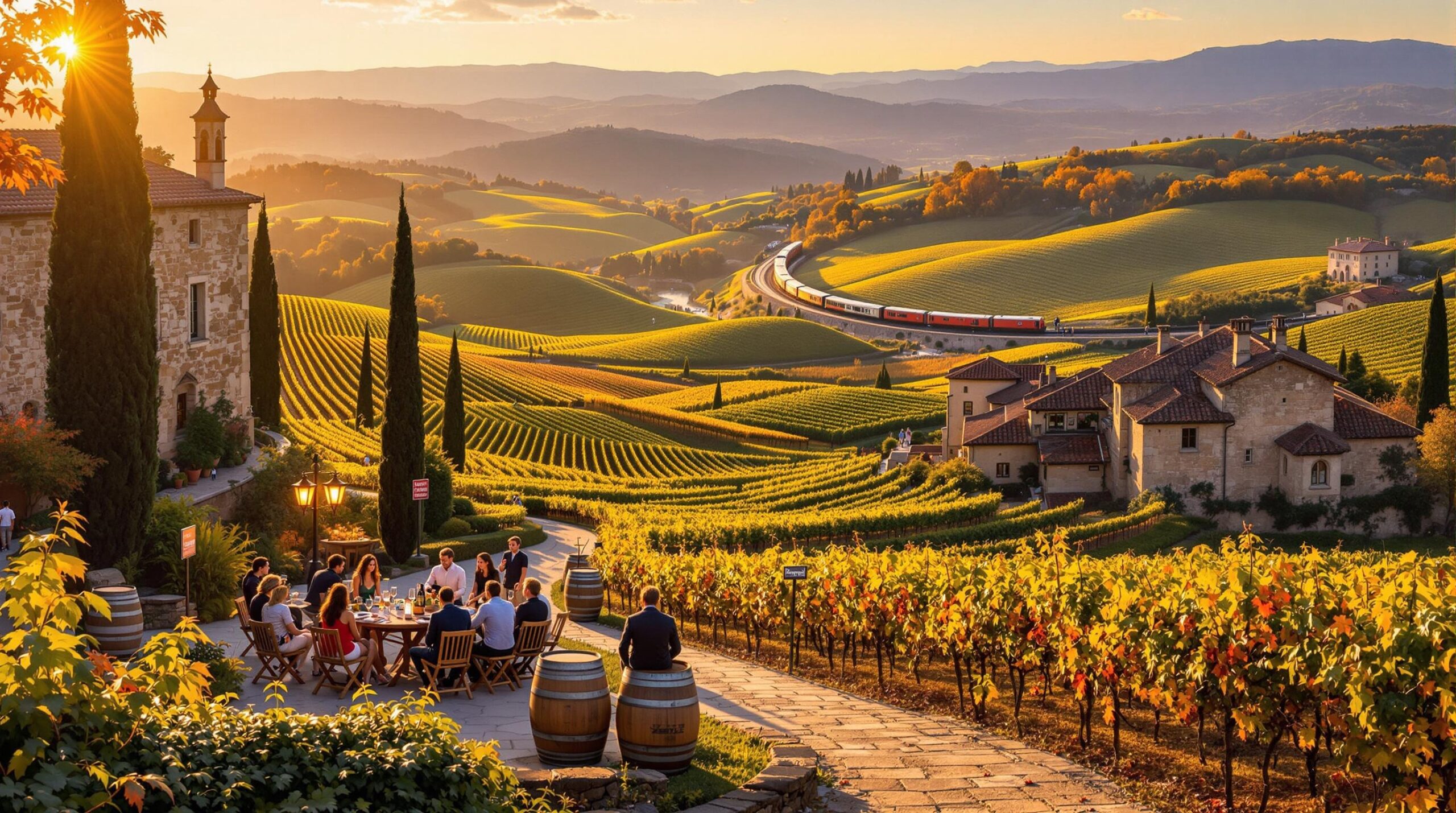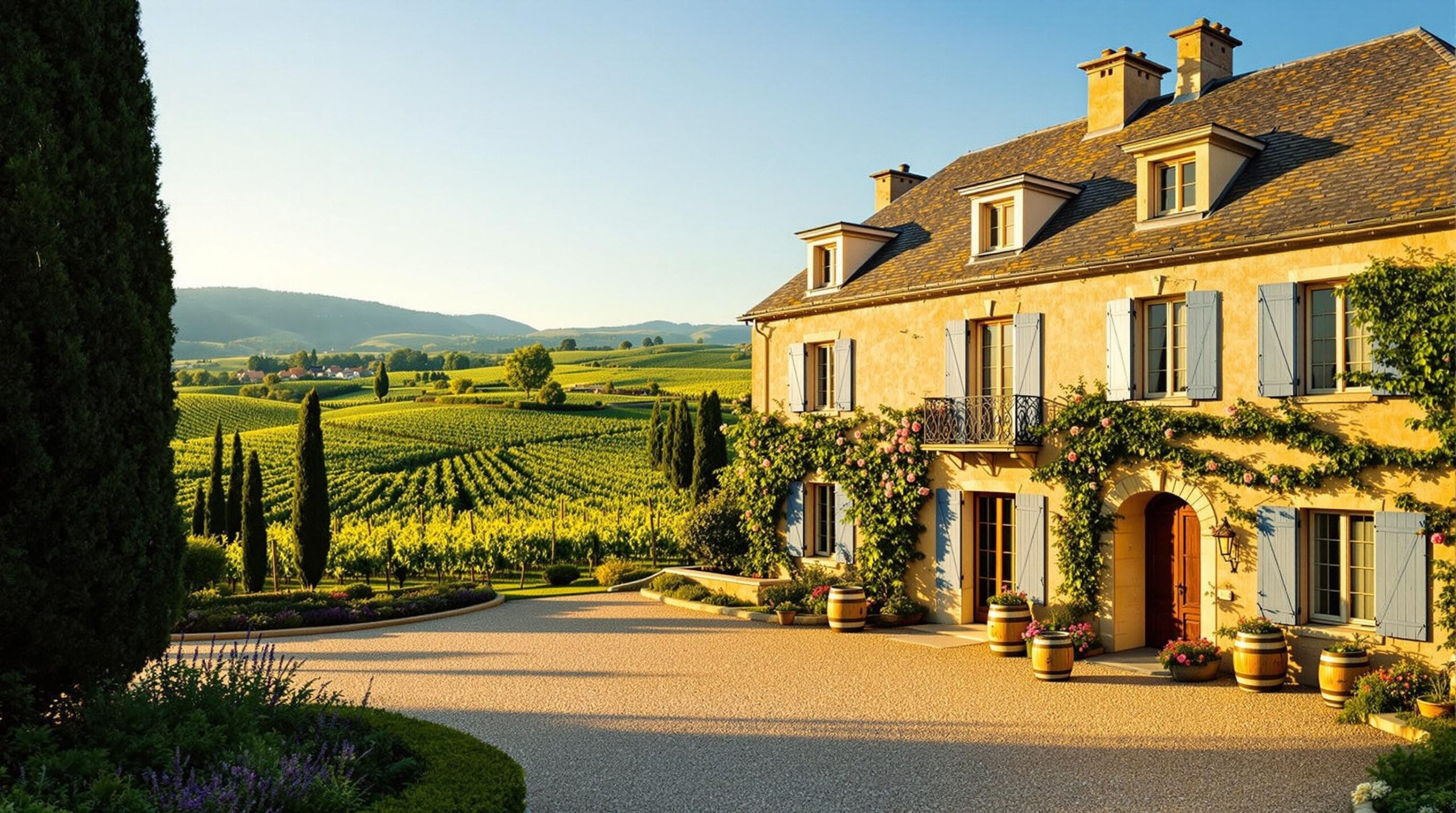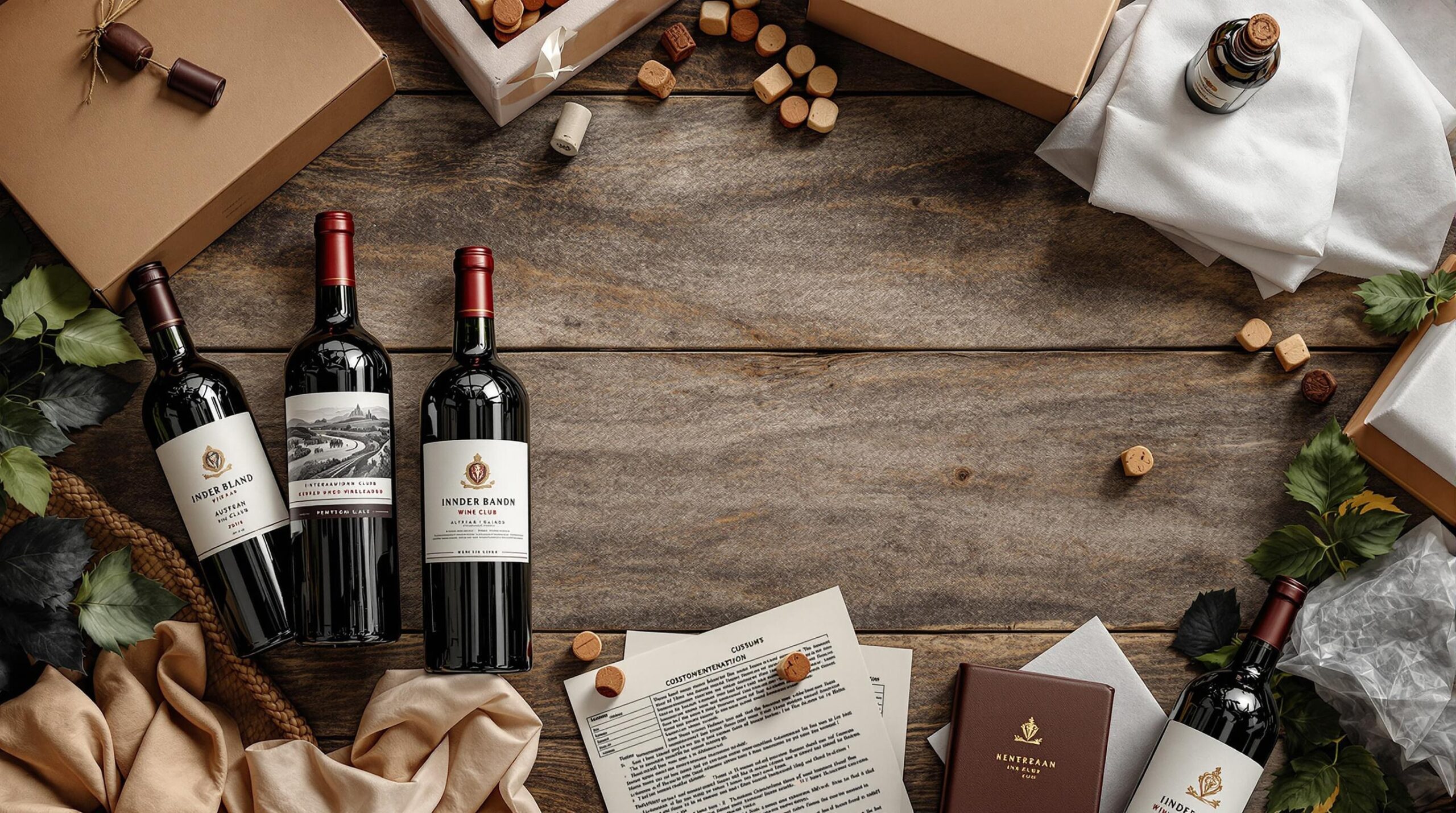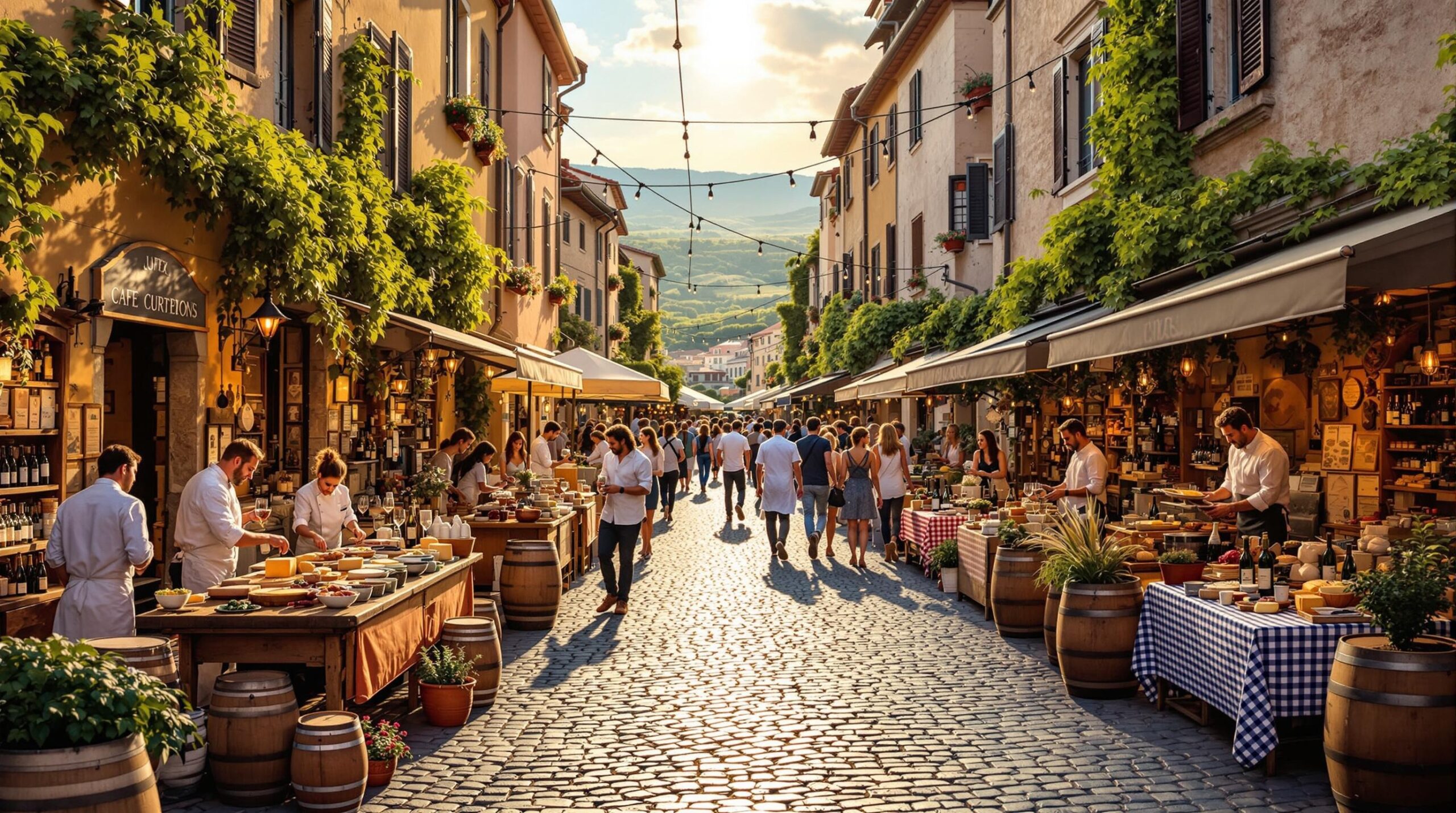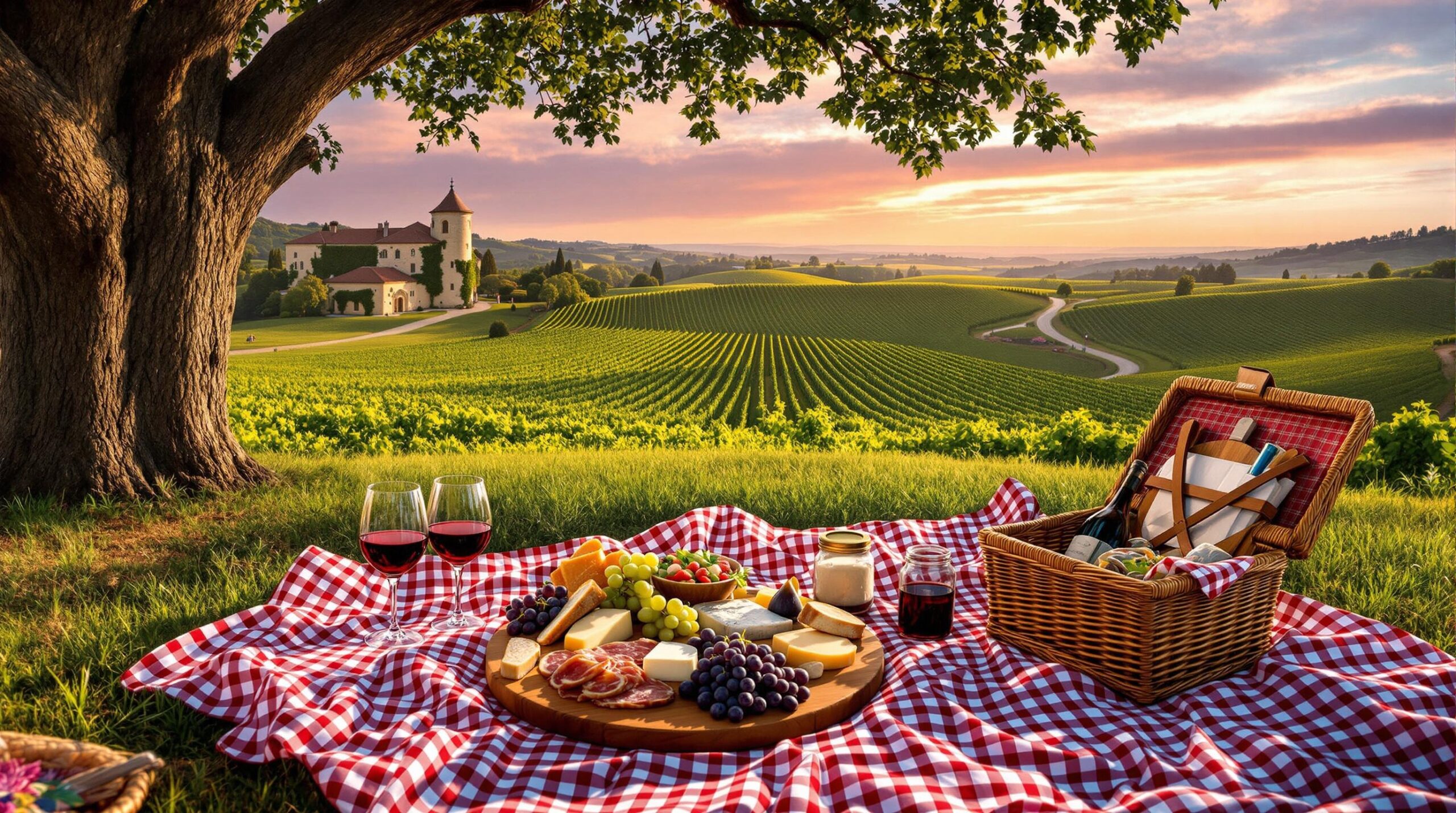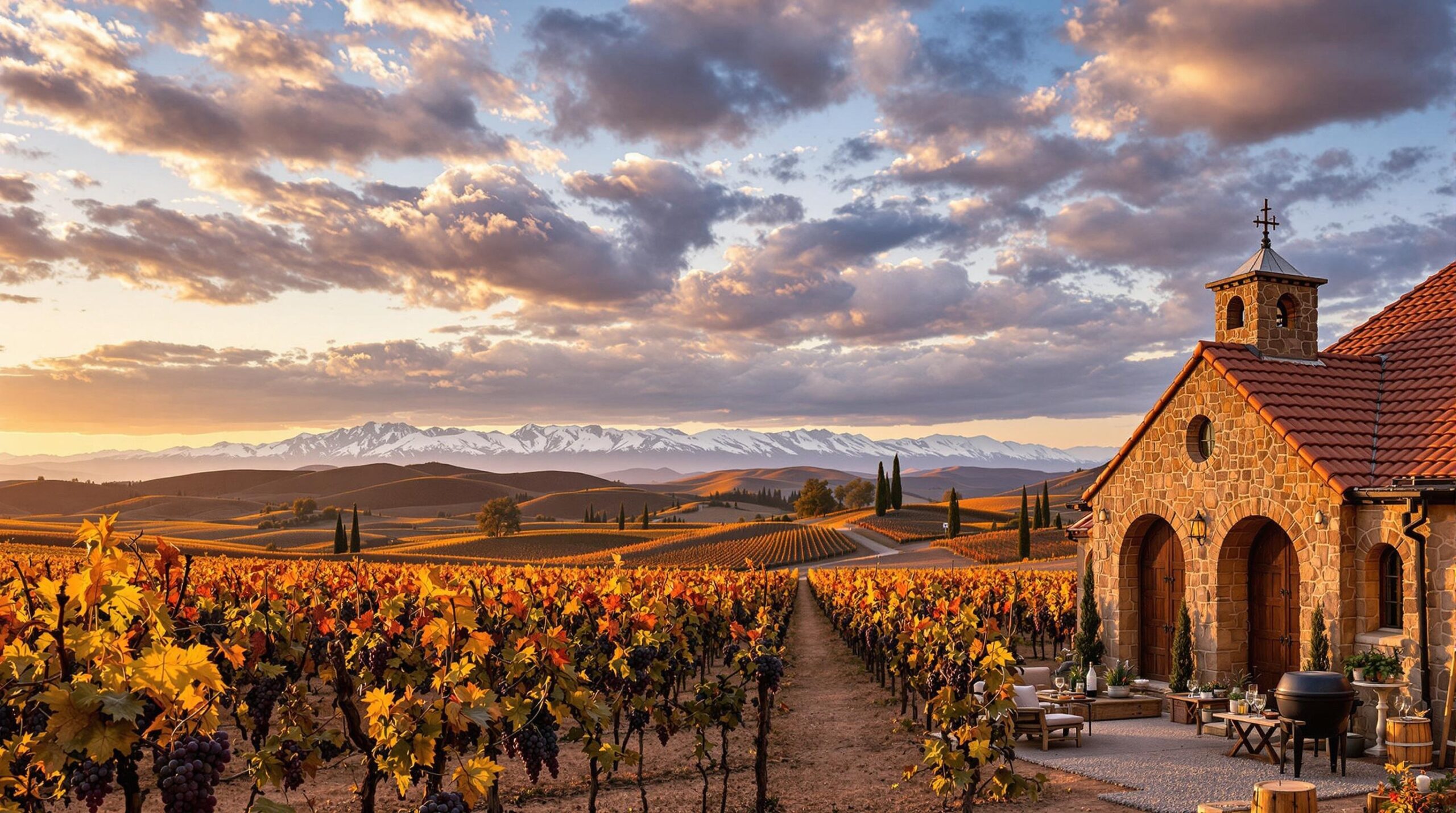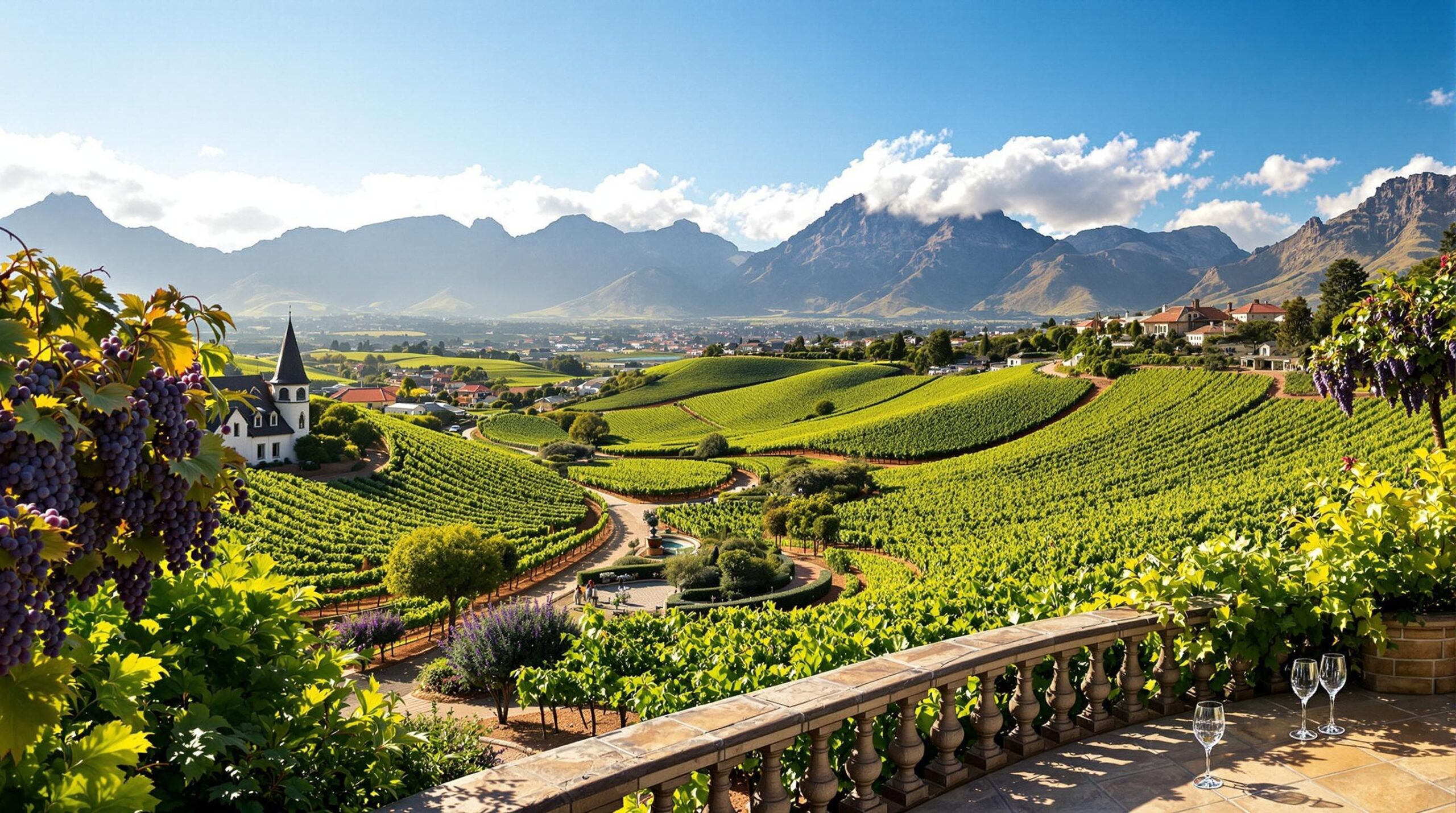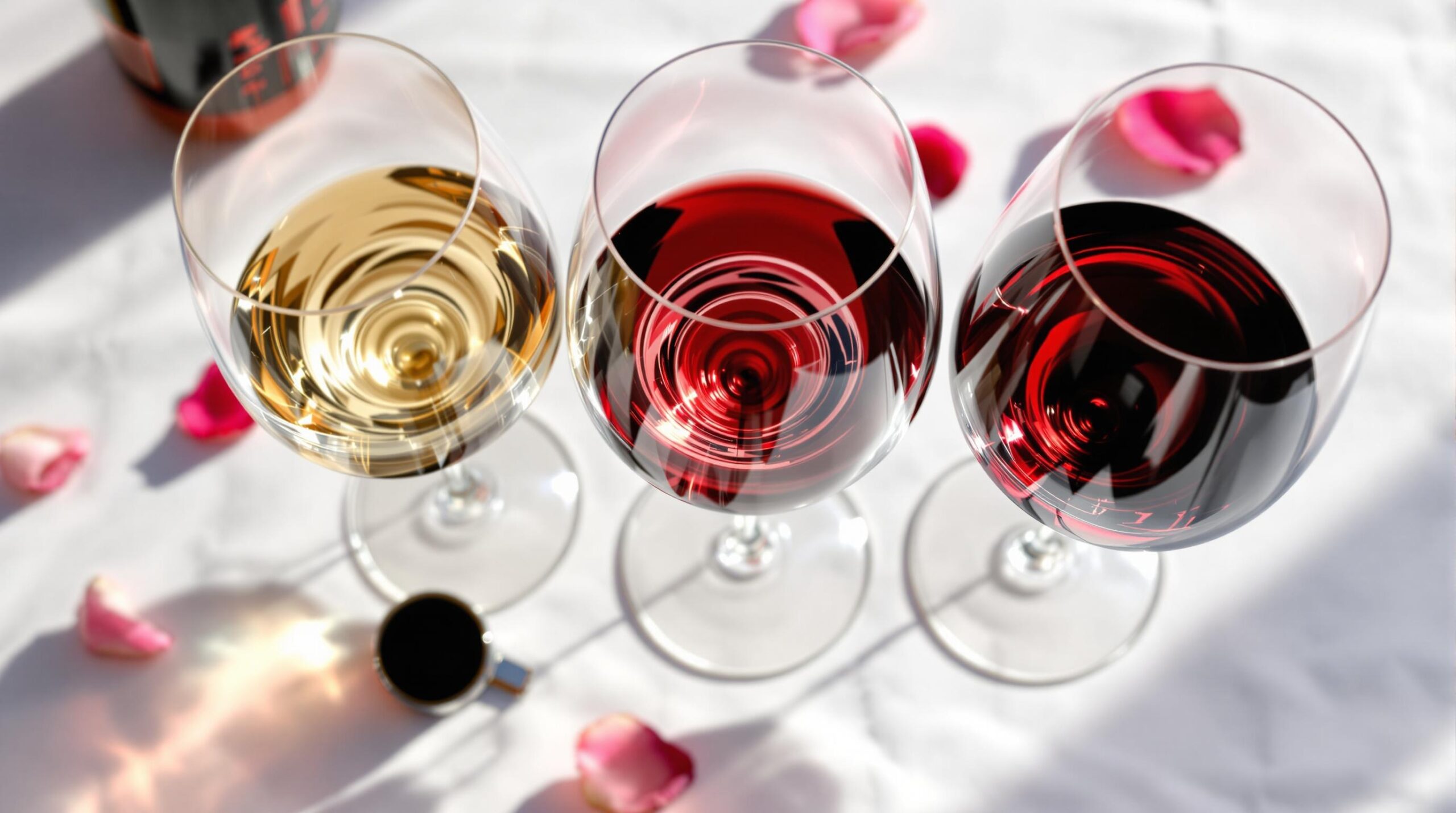Wine regions offer more than just tastings – they’re gateways to understanding local culture, cuisine, and centuries-old traditions. This quick guide helps you create a balanced itinerary that maximizes your wine country experience.
From selecting the right season to visit to mapping out must-try wineries, we’ll explore how to plan a memorable wine region adventure that matches your interests and pace.
Choosing Your Ideal Wine Destination
- Classic Regions: Napa Valley, Bordeaux, Tuscany
- Emerging Areas: Finger Lakes NY, Willamette Valley OR, Mendoza Argentina
- Off-Peak Options: Prosecco Road Italy, Rioja Spain, Hunter Valley Australia
Consider your wine preferences, travel style, and budget when selecting your destination. Each region offers unique experiences beyond wine tasting.
Timing Your Visit Right
| Season | Benefits | Considerations |
|---|---|---|
| Spring | Fewer crowds, budding vines | Variable weather |
| Summer | Perfect weather, outdoor events | Peak prices, busy tasting rooms |
| Fall | Harvest activities, beautiful colors | Limited accommodation availability |
| Winter | Best deals, intimate experiences | Some wineries closed |
Mapping Your Daily Route
Morning: Start with larger wineries that open early. Afternoon: Visit boutique producers. Evening: Focus on wineries with restaurants or sunset views.
- Limit visits to 3-4 wineries per day
- Allow 1-2 hours per winery
- Include break times for lunch and photos
- Consider hiring a driver or joining a tour
Plot your route in advance and make reservations for special tastings or popular wineries. Many premium wineries require advance booking.
[Note: This covers the first 4 sections of the outline. Remaining sections would include food pairings, accommodation tips, cultural activities, and final recommendations.]
Food and Wine Pairings on the Go
Many wine regions feature signature local dishes and specialty food products that complement their wines perfectly.
- Pack a Picnic: Local cheeses, cured meats, fresh bread
- Restaurant Breaks: Schedule lunch at winery restaurants
- Food Markets: Visit local producers between tastings
Where to Stay and Rest
Strategic accommodation choices enhance your wine region experience while providing convenient transportation options.
| Lodging Type | Advantages | Best For |
|---|---|---|
| Vineyard B&Bs | Intimate setting, wine knowledge | Romance, wine education |
| Boutique Hotels | Central location, amenities | Luxury, convenience |
| Village Rentals | Local experience, kitchen access | Groups, longer stays |
Beyond Wine: Cultural Activities
Balance wine tasting with local experiences to fully appreciate the region’s heritage.
- Cooking Classes: Learn regional specialties
- Historical Tours: Visit ancient cellars and estates
- Seasonal Events: Harvest festivals, wine celebrations
- Artisan Workshops: Meet local craftspeople
Tips for Maximum Enjoyment
Smart planning ensures a rewarding wine region experience that matches your interests and energy levels.
- Schedule rest days between tasting days
- Stay Hydrated: Alternate wine with water
- Take Notes: Document favorite wines and experiences
- Ship Wine Home: Many wineries offer shipping services
- Book Priority Tastings: Reserve spots at must-visit wineries first
Consider joining wine clubs at favorite wineries for future benefits and exclusive access to limited releases.
10 Common Questions About Planning Wine Region Trips
How many wineries should I visit per day?
Plan for 3-4 wineries daily to allow proper tasting time and avoid palate fatigue. Schedule longer visits (60-90 minutes) at wineries where you plan to dine or take tours.
What’s the best time of year to visit wine regions?
Visit during harvest season (typically September-October) for the full winemaking experience. Spring offers beautiful vineyard views and smaller crowds, while summer brings perfect weather but peak tourism.
Should I hire a driver or join a tour?
Always arrange transportation when wine tasting. A private driver offers flexibility and customization ($300-500/day), while group tours ($100-200/person) provide structured experiences and built-in companions.
Do I need to make reservations?
High-end wineries often require appointments, especially in regions like Napa Valley. Book popular wineries 2-3 months ahead, particularly during peak season.
How much do wine tastings cost?
Tasting fees range from complimentary to $50+ per person at premium estates. Many wineries waive fees with bottle purchases.
What should I pack for wine tasting?
- Neutral-scented sunscreen
- Water bottle for hydration
- Light snacks
- Wine shipping containers if flying home
- Camera for vineyard photos
How do I transport wine purchases home?
Check local shipping laws for your destination. Many wineries offer shipping services, or pack wines in special travel bags for checked luggage.
Which regions pair well together for a longer trip?
| Main Region | Pair With |
|---|---|
| Napa Valley | Sonoma County |
| Tuscany | Piedmont |
| Bordeaux | Loire Valley |
What’s worth splurging on versus saving?
Splurge on signature experiences like vineyard lunches or private tastings at historic estates. Save by visiting smaller family wineries and booking mid-week appointments.
How do I create a balanced itinerary?
Mix large and small wineries, traditional and modern approaches. Include non-wine activities like local markets or cooking classes to avoid palate fatigue.
Quick Planning Tips
- Map distances between wineries – allow 20-30 minutes travel time
- Schedule appointments progressively north to south or east to west
- Book lunch reservations between tastings
- Include buffer time for unexpected discoveries
- Research shipping options before purchasing
Consider joining wine clubs at favorite wineries for future perks and discounts. Take photos of bottles you enjoy for future reference, and don’t hesitate to take tasting notes on your phone.

